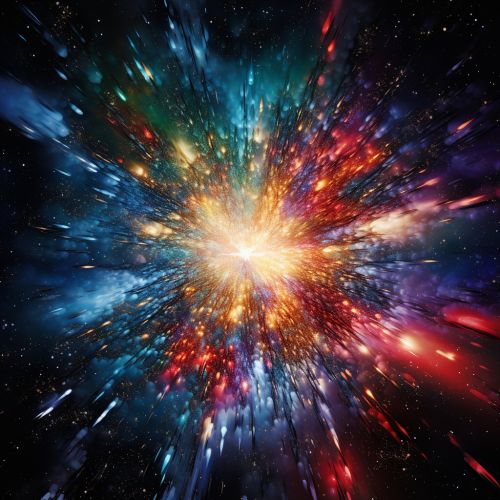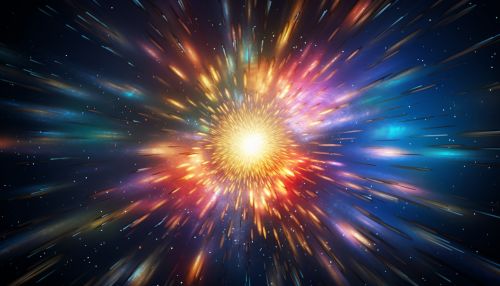Big Bang
Origins of the Theory
The Big Bang theory is a cosmological model that describes the observable universe's evolution from a very high-density and high-temperature state. The theory is centered on the idea that the universe has been expanding since its inception. The concept of the Big Bang was originally proposed by Georges Lemaître, a Belgian physicist and Roman Catholic priest. Lemaître's theory was later developed and popularized by British astronomer Fred Hoyle, who ironically coined the term "Big Bang" during a radio broadcast in 1949 as a pejorative, as he himself was a proponent of the steady state theory, a now largely discredited model of the universe.


Theoretical Underpinnings
The Big Bang theory is supported by a range of observations. The most important of these is the redshift of very distant galaxies. When observed, these galaxies are moving away from us, and their light is therefore shifted towards the red end of the spectrum. This phenomenon, known as Hubble's Law, suggests that the universe is expanding. Another key piece of evidence is the existence of the Cosmic Microwave Background (CMB). The CMB is a faint cosmic background radiation filling all space that is an important source of data on the early universe's formation.
Expansion of the Universe
The Big Bang theory postulates that the universe has been expanding since its inception. This expansion is often analogized as the inflation of a balloon, with galaxies moving away from each other as the space between them expands. This concept of an expanding universe is supported by the aforementioned redshift of distant galaxies. The rate of this expansion, known as the Hubble constant, has been a subject of much scientific debate and investigation.
The Singularity
At the heart of the Big Bang theory is the concept of the singularity. This is a point at which all the matter in the universe was concentrated before the Big Bang occurred. The singularity is a concept that arises out of General Relativity, and is a point of infinite density and infinitesimal volume. It is important to note that our current understanding of physics breaks down when trying to describe the singularity, and it remains a topic of ongoing research in theoretical physics.
Timeline of the Big Bang
The timeline of the Big Bang describes the sequence of events according to the Big Bang theory of cosmology. It includes the Planck epoch, during which the universe had a temperature of over a billion billion billion degrees and the four fundamental forces—gravity, electromagnetism, and the strong and weak nuclear forces—were unified. This was followed by the Grand Unification epoch, the inflationary epoch, the electroweak epoch, and so on, leading up to the current epoch.
Criticisms and Alternatives
While the Big Bang theory is the most widely accepted model for the universe's evolution, it is not without its critics. Some alternative theories have been proposed, such as the steady state theory and the cyclic model. These theories, while not as widely accepted as the Big Bang theory, offer different perspectives on the universe's origins and evolution.
